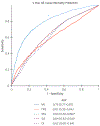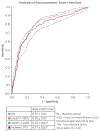Artificial Intelligence in Cardiovascular Imaging: JACC State-of-the-Art Review
- PMID: 30898208
- PMCID: PMC6474254
- DOI: 10.1016/j.jacc.2018.12.054
Artificial Intelligence in Cardiovascular Imaging: JACC State-of-the-Art Review
Abstract
Data science is likely to lead to major changes in cardiovascular imaging. Problems with timing, efficiency, and missed diagnoses occur at all stages of the imaging chain. The application of artificial intelligence (AI) is dependent on robust data; the application of appropriate computational approaches and tools; and validation of its clinical application to image segmentation, automated measurements, and eventually, automated diagnosis. AI may reduce cost and improve value at the stages of image acquisition, interpretation, and decision-making. Moreover, the precision now possible with cardiovascular imaging, combined with "big data" from the electronic health record and pathology, is likely to better characterize disease and personalize therapy. This review summarizes recent promising applications of AI in cardiology and cardiac imaging, which potentially add value to patient care.
Keywords: artificial intelligence; cardiovascular imaging; deep learning; machine learning.
Copyright © 2019 American College of Cardiology Foundation. Published by Elsevier Inc. All rights reserved.
Figures









References
-
- Russell S, Norvig P. Artificial Intelligence: A Modern Approach. 2nd edition Upper Saddle River, New Jersey: Prentice Hall, 2003.
-
- Szolovits P, Patil RS, Schwartz WB. Artificial intelligence in medical diagnosis. Ann Intern Med 1988;108:80–7. - PubMed
-
- Darcy AM, Louie AK, Roberts LW. Machine learning and the profession of medicine. JAMA 2016;315:551–2. - PubMed
-
- Nilsson N The Quest for Artificial Intelligence: A History of Ideas and Achievements. New York: Cambridge University Press, 2009.
Publication types
MeSH terms
Grants and funding
LinkOut - more resources
Full Text Sources
Other Literature Sources

